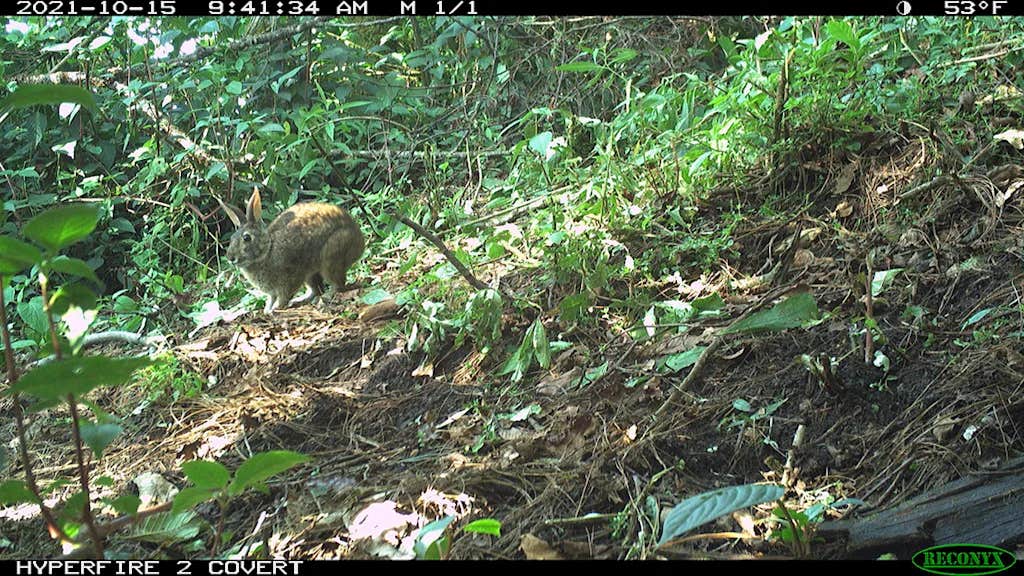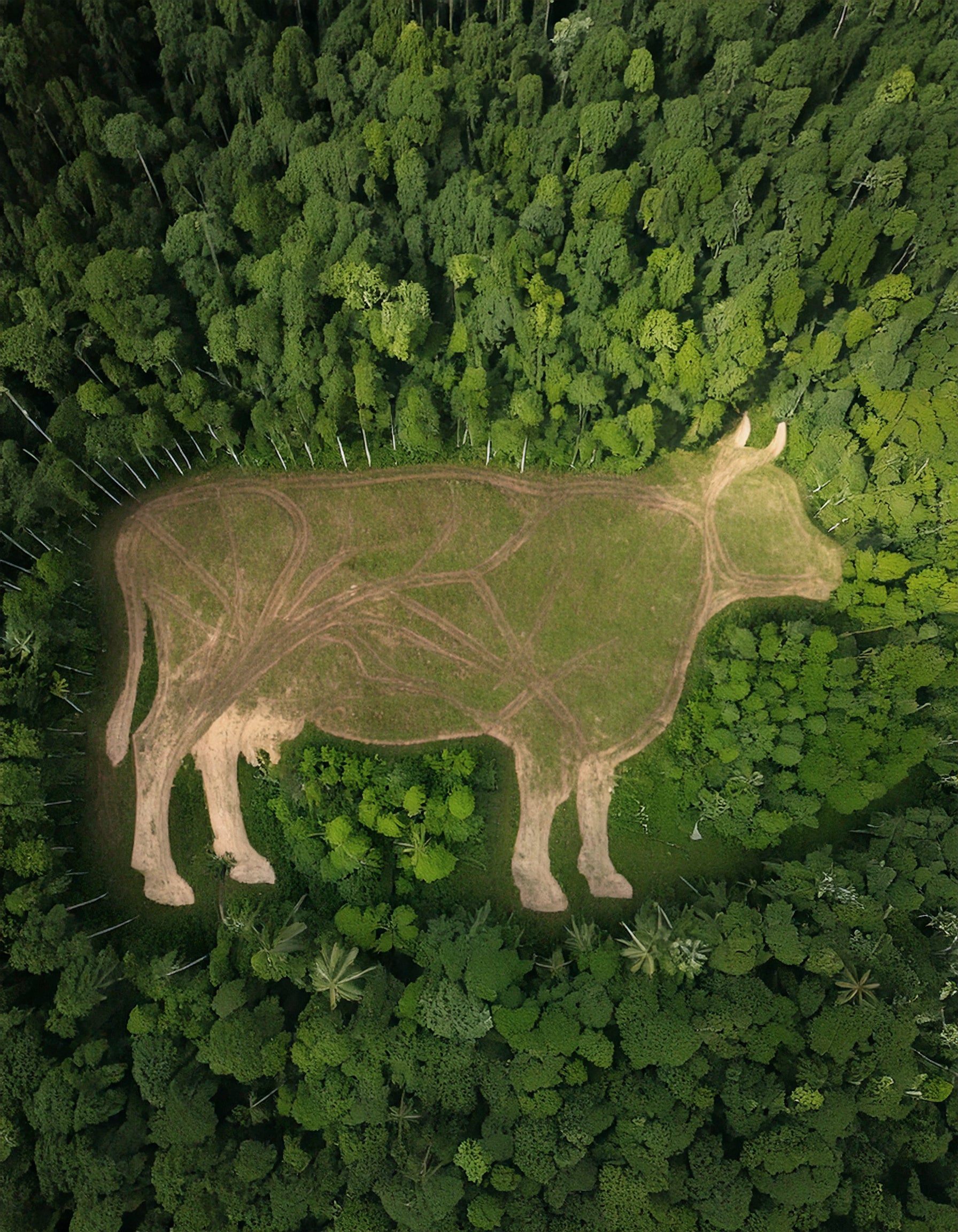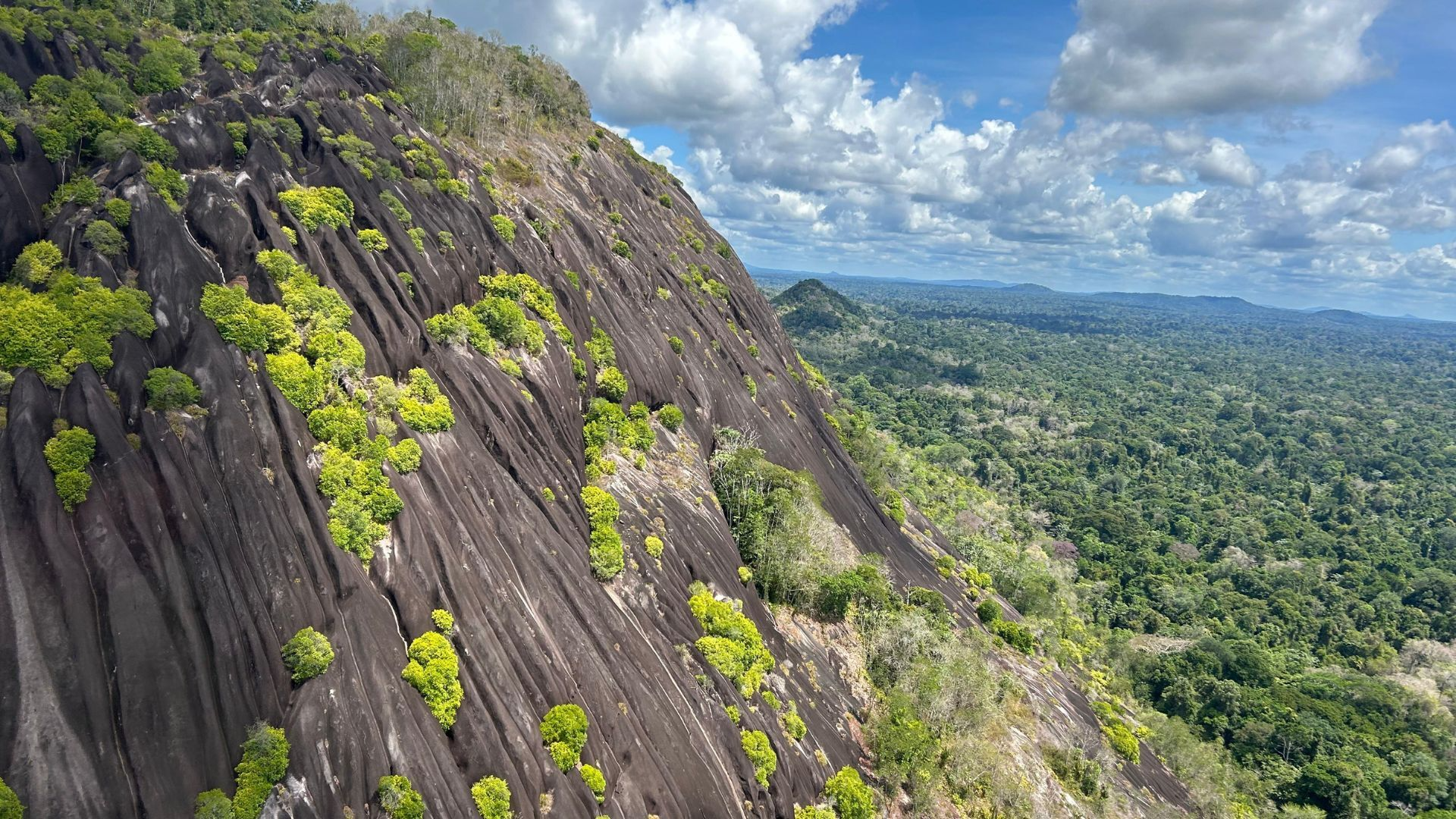The Omiltemi cottontail rabbit (Sylvilagus insonus), a species of rabbit lost to science since the early 1900s, has been rediscovered in the Sierra Madre del Sur, a mountain range in Mexico. An expedition team led by José Alberto Almazán-Catalán, ecologist and president of Instituto para el Manejo y Conservación de la Biodiversidad (INMACOB), visited 10 areas in the state of Guerrero over five years searching for the rabbit. They found the rabbit in seven of the areas they visited. The Omiltemi cottontail rabbit is the 13th species rediscovered as part of Re:wild’s Search for Lost Species, the largest global effort to find and protect species that have not had a scientifically documented sighting in at least 10 years, but are not extinct.
“Just knowing that it had been 100 years, and no other scientist had seen a live [Omiltemi] rabbit is incredible,” said Almazán-Catalán. “It's totally different from the regular cottontail, and I was completely amazed and very happy to have had that opportunity to see one.”
The rabbit has “cottontail” in its name, but the Omiltemi cottontail rabbit does not have a fluffy, white, round tail. Instead, its tail is black and short. None of the Omiltemi cottontail rabbits the expedition team saw or captured photos of had white tails or any white patches of fur. The original description of the species by Western science and several Omiltemi cottontail rabbits collected by Edward William Nelson in 1904 also don’t have any white spots or a white tail, but at some point in the following decades, “cottontail” was included in the common name of the species.
A black tail, though the most obvious characteristic that separates the Omiltemi cottontail rabbit from other rabbit species, isn’t the only physical feature that makes it stand out. It’s smaller overall than other rabbits in the area and also has smaller ears.
When Almazán-Catalán and his team began searching for the Omiltemi cottontail rabbit in 2019, they originally focused on forested areas around Chilpancingo, the capital city of Guerrero in the the Sierra Madre del Sur mountains. It’s where the rabbit was first recorded by Edward William Nelson in 1904, however the expedition team didn’t find any signs of the Omiltemi cottontail rabbit in the forests around the city. From 2020 to 2022, they shifted their efforts to focus on nearby areas that showed signs of rabbits living in high-elevation conifer forests.
When Almazán-Catalán and his team visited communities and began interviewing locals, many people were familiar with the Omiltemi cottontail rabbit and told the expedition team that the rabbit is a food source for communities. During a series of interviews in 2020, local hunters in villages in the Filo Mayor region gave several rabbits they had previously caught to the expedition team. Local hunters had also donated a skin of an Omiltemi cottontail rabbit to scientists in 1998, which is one of the four specimens individuals ever known to scientists before the INMACOB expedition.
The Omiltemi cottontail rabbit is a niche, range-restricted species, found only in the conifer forests of the Sierra Madre del Sur and the expedition team is hoping to learn more about its behavior, ecology and population size.
“Eighty percent of the objectives of this project have been achieved,” said Almázan. “However, we still need to learn more about the natural history of this species; especially information about what it does between January and June, which is its reproductive season and when the greatest numbers of the species have been recorded. In addition, we need to better understand the local knowledge of the Omiltemi cottontail rabbit and the role the species plays in its distribution area. It’s also going to be important to design conservation proposals with local residents, municipal authorities and the National Commission of Natural Protected Areas (CONANP).”
All local community members the expedition interviewed about the species expressed a willingness to help protect the rabbit if scientists determine that threats such as poaching and subsistence hunting may be causing population declines. Locals reported seeing the rabbits more often during the summer months, and the expedition team also often saw the rabbits on roadsides between May and September.
A new biosphere reserve, Sierra Tecuani, covers the current known range of the Omiltemi cottontail rabbit, but there are currently no special conservation measures to protect the species.
“This search was full of unexpected turns and employed everything from interviews to drones to find this little rabbit,” said Christina Biggs, lost species officer for Re:wild. “We applaud these tenacious and comprehensive efforts as they provide crucial updates for our partner IUCN Red List assessors to better make recommendations for species survival. Alberto and his team are helping fill a huge knowledge gap to make sure that the Omiltemi cottontail rabbit is never lost to science again.”
Since 2017, working with local partners around the world, Re:wild’s Search for Lost Species has rediscovered 13 of its most wanted species: Jackson’s climbing salamander in Guatemala, Wallace’s giant bee in Indonesia, velvet pitcher plant in Indonesia, silver-backed chevrotain in Vietnam, Somali sengi in Djibouti, Voeltzkow’s chameleon in Madagascar, Sierra Leone Crab in Sierra Leone, Pernambuco holly in Brazil, De Winton’s golden mole in South Africa, Attenborough’s long-beaked echidna in Indonesia, Fagilde’s trapdoor spider in Portugal, big puma fungus in Chile and the Omiltemi cottontail rabbit in Mexico.
Re:wild’s Search for Lost Species is supported by the Colossal Foundation.
Additional quotes
Ben Lamm, co-founder and CEO of Colossal Biosciences "We are thrilled that our support of the Lost Species effort continues to see important progress. The more species we can find and support the better off we all are."
# # #
Photo: A camera trap photo of an Omiltemi cottontail rabbit in the Sierra Madre del Sur. (Photo by Joe Figel)

Devin Murphy
Writer
Devin Murphy is Re:wilds’s senior communications specialist and helps Re:wild and its partners tell stories about the work they do to protect wildlife and wildlands around the planet. Her favorite stories about conservation include fascinating and little-known species and the dedicated humans protecting them.



